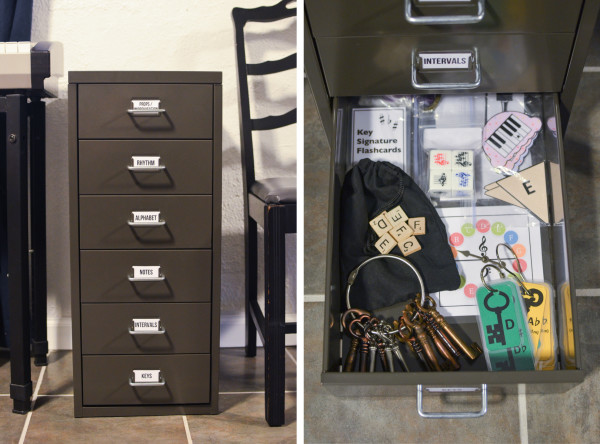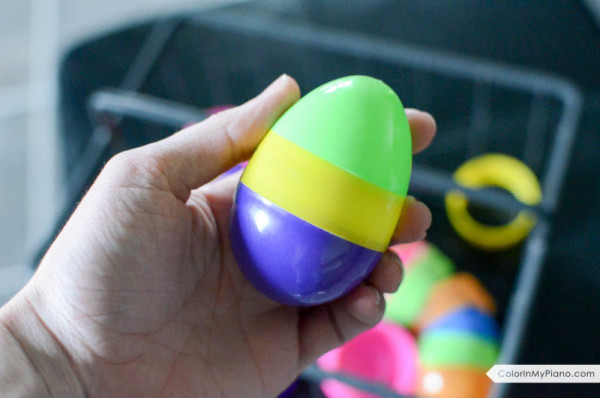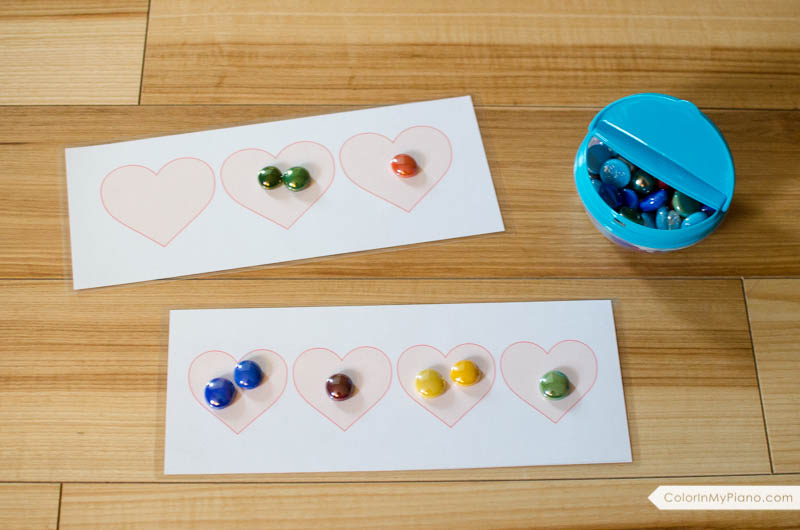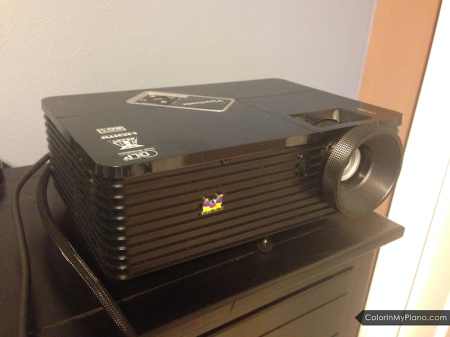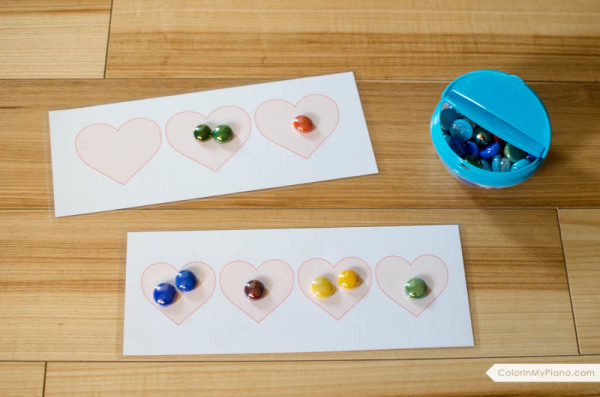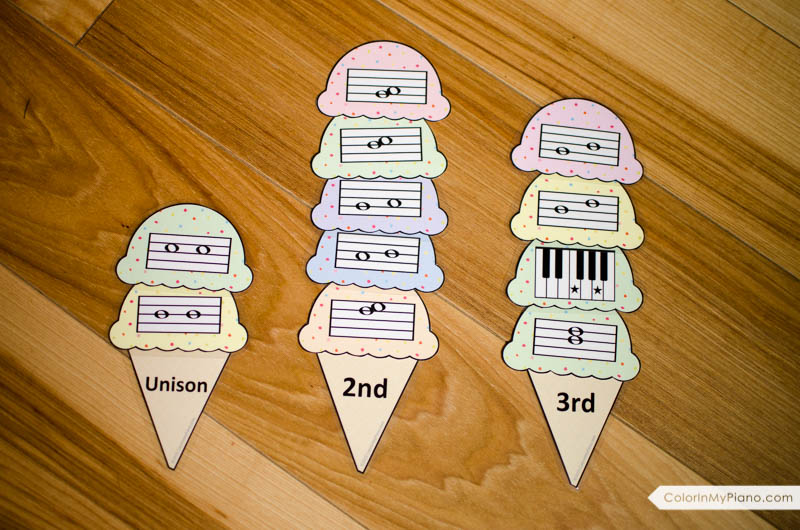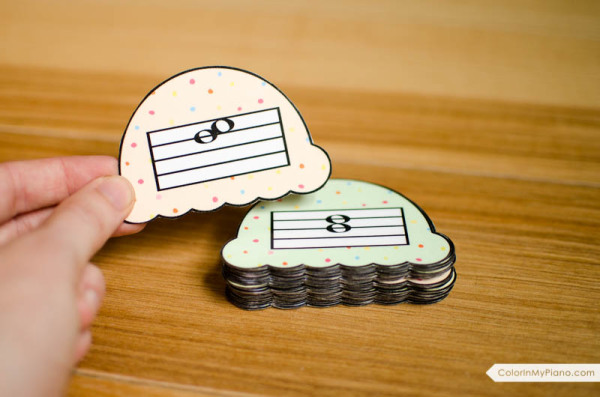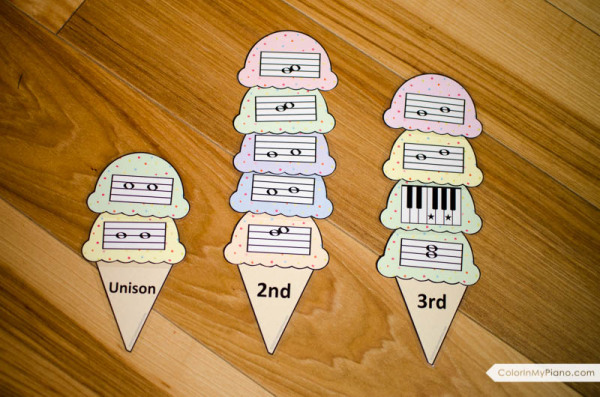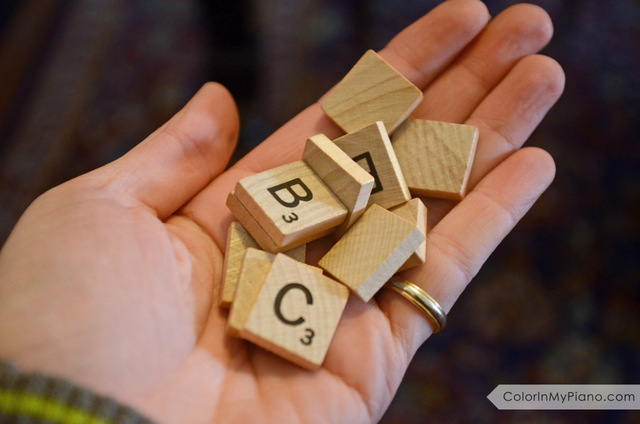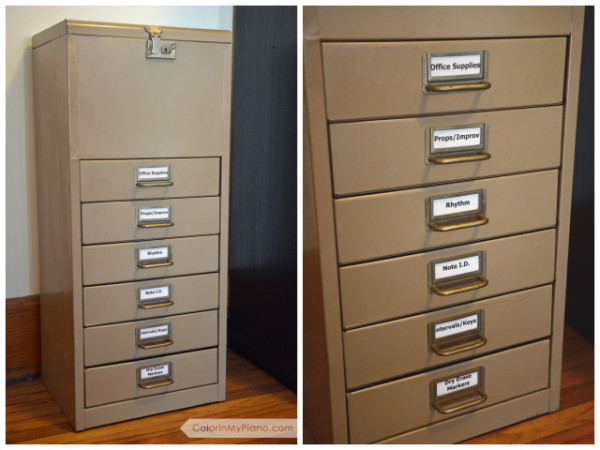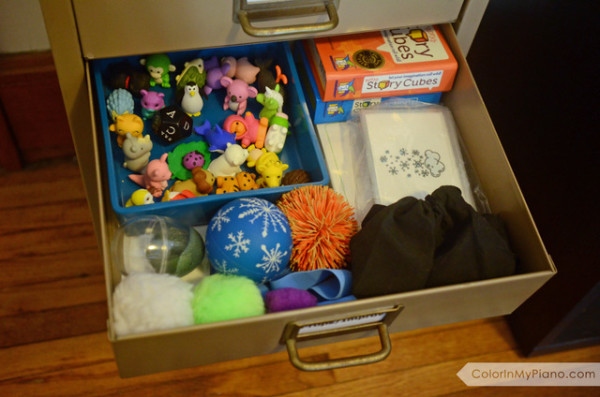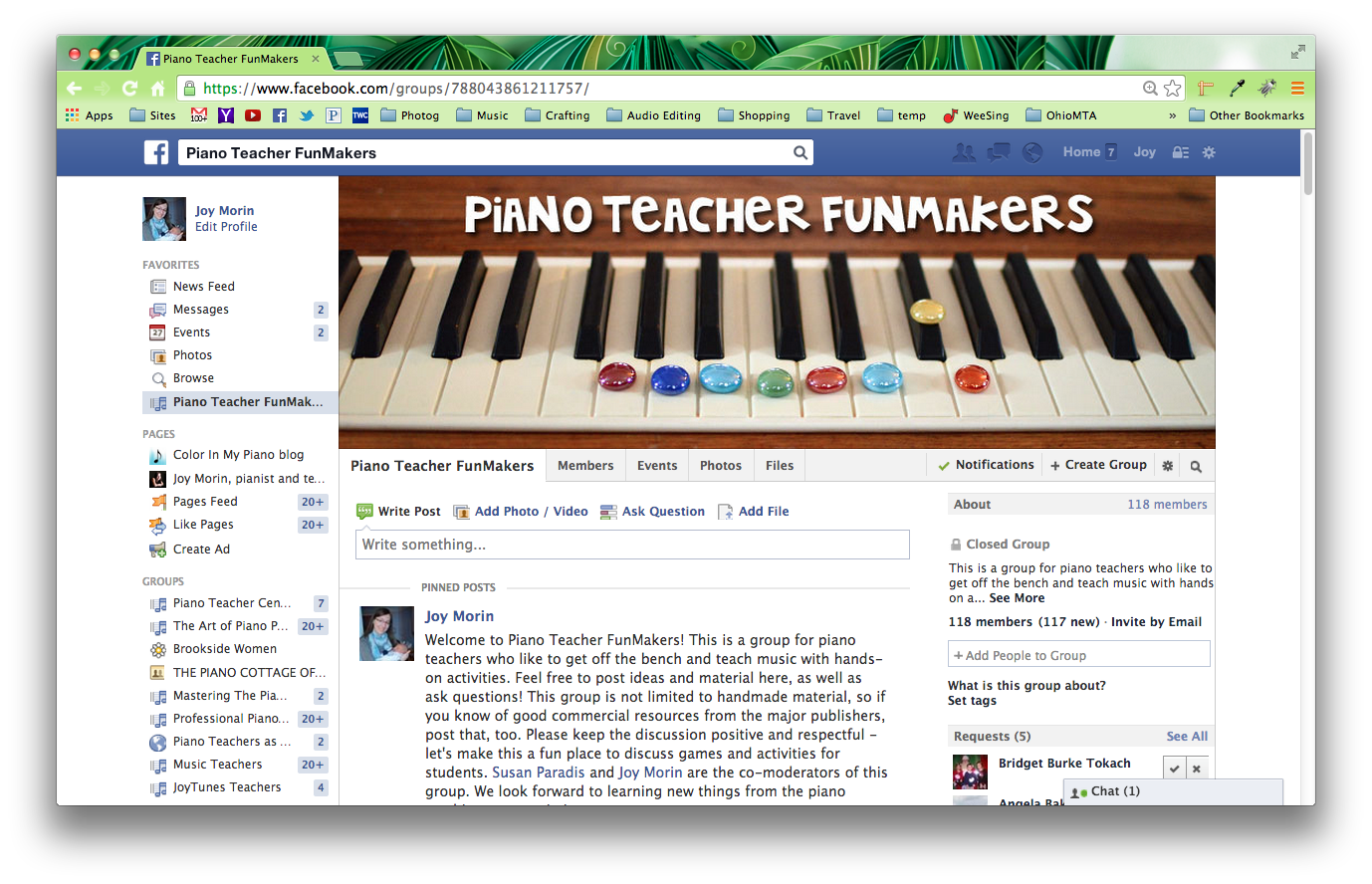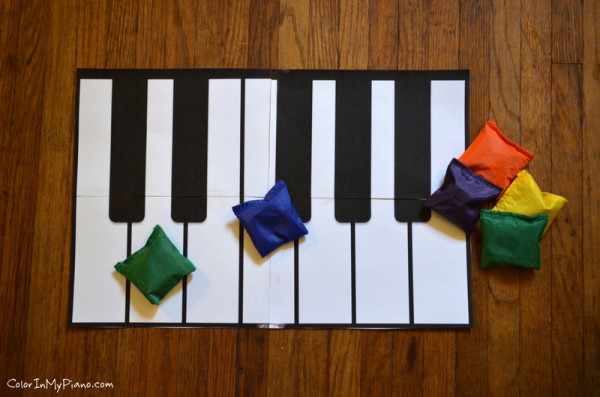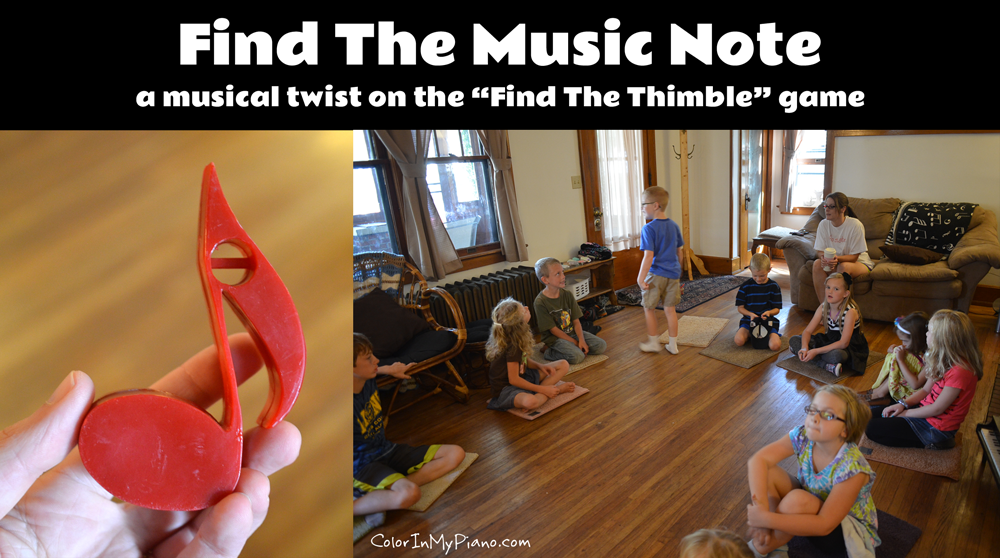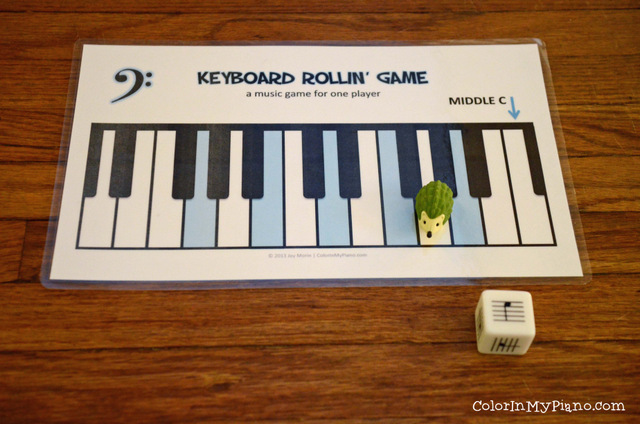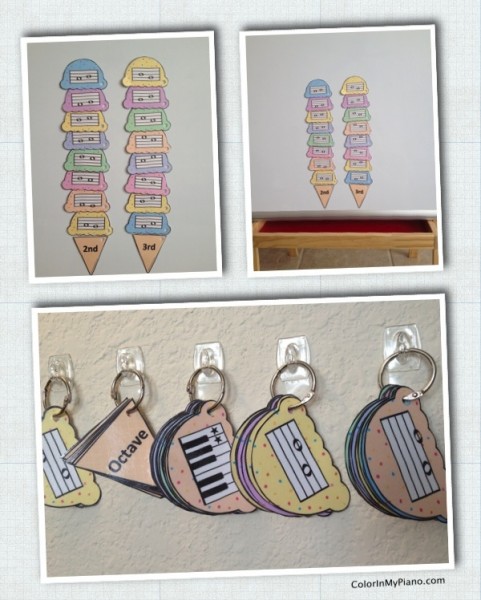Last week was a busy week and I didn’t manage to get a single blog post posted! Hope you missed me — I’m back! 😉
On Saturday, I held a kick-off Pizza Piano Party with my students who are under age 14. My goal with this get-together was for students to get to know each other (especially the new beginners) and to generate some excitement for the new year. Before and after eating our pizza, we played a few simple music games.
First, I let students color and cut-out their own paper piano (download the blank printable here from twink.net). This was a good activity for students to work on as everyone arrived. It also allowed students to chat openly and get to know each other as they worked.

Next, we played a game I called, “Find the Music Note.” It is a musical twist of the old “Find The Thimble” game. I read about this game somewhere online over a year ago — let me know if you have any idea whom I should credit for this game idea.
To play this game, you need something musical to be the thimble. I found the plastic red eighth note pictured below at a thrift store a couple of years ago, knowing it would be useful for something one day! I think it was originally a balloon weight. You can any small little object for this game. I have some music note and piano buttons I bought from a craft store — something like that would work well.
Each round of the game, there is a “Hider” and a “Finder.” The Finder must close their eyes as the Hider finds a good place to hide the “thimble.” All of the other students must pay attention and watch where the Hider puts the thimble. Once the Hider has returned to his/her seat, the Finder may open his/her eyes. As the Finder walks around the room, everyone else must help tell the Finder whether they are getting closer to or further from where the thimble is hidden. Instead of saying “hot” and “cold” as the traditional game goes, I asked students to vocalize high sounds and low sounds. (So they wouldn’t wear out their voices too much, I asked them not to make loud sounds — just high/low.)
We played a few rounds of this game until everyone had a turn to be either the Hider or the Finder. My students had such a blast with this simple game! It is a good party game to use with young students of varying levels.
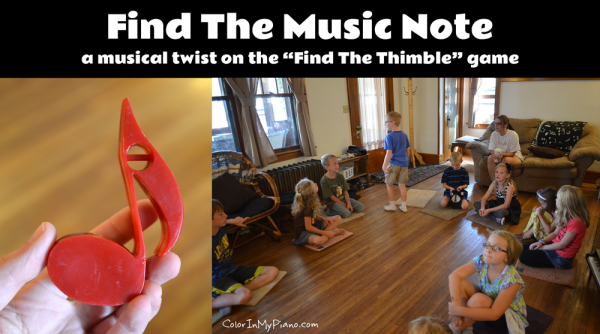
Next, we played an indoor, team version of the Spell-A-Keyboard game. If anyone is interested, here is the printable for making the floor keyboards pictured below.
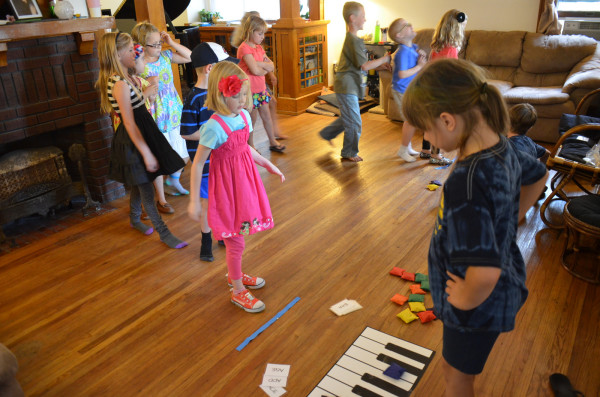
The last game we played was what I call the Rhythm Name Game (read about this game here). I use this game frequently at group events because it works well with a group of students at varying levels. Students of any level can stand to improve their sense of rhythm, ear training, and musical memory! This game works well as the last game because gameplay can continue even when students gradually leave with their parents.
I am looking forward to more monthly Piano Parties this year!
